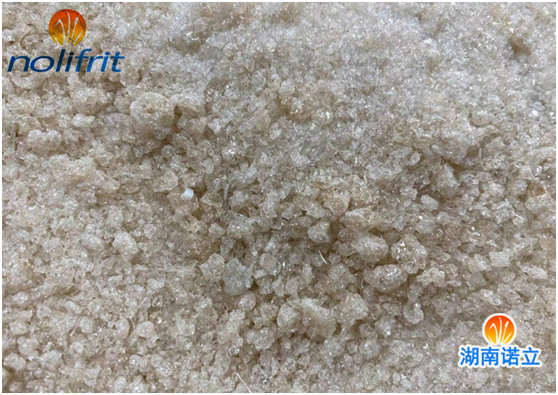Difference Between Enamel Frit and Glass
Porcelain enamel is a composite material fired at high temperature from metal and glass-based inorganic materials. This "glass-based inorganic material" refers to porcelain enamel frit (enamel frit for short). Enamel frit is a kind of unground frit, which is a kind of borosilicate material. It has many similarities with glass. It is an amorphous solid with remotely disordered atomic arrangement and an orderly process. The formula and melting process are similar to those of glass. So what is the difference between enamel frit and glass?
1. Composition of enamel
In addition to glass, the material of enamel has a small amount of crystals, such as titanium dioxide, zirconium dioxide and antimony oxide. If it contains different metals, the color is also different. For example, if it contains iron, the frit will appear red, and it will contain copper. Appears to be blue.

2. Composition of glass
Glass is an amorphous inorganic non-metallic material, and its main component is silicon dioxide, so most of the glass we see is colorless and transparent. As for colored glass, it is because of the addition of metal oxides or salts, as well as tempered glass made by physical and chemical methods.
3. The main difference: ingredients
The biggest difference between enamel and glass is that the silicon dioxide content of enamel is lower than that of glass, and the content of spinel-type oxide is higher. Therefore, enamel frit has many unique characteristics of its own. When choosing enamel frit, enamel manufacturers should pay attention to the following aspects:
1. High adhesion strength, which determines the pros and cons of the combination of the ground coat layer and the metal blank;
2. No bubbles, pores, focus and other defects will be produced during firing;
3. Excellent mechanical properties, good compressive, flexural and tensile strength;
4. Good chemical stability, acid and corrosion resistance;
5. It has good thermal stability.